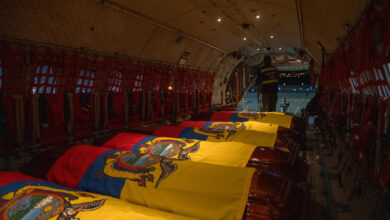The tragic reality of Arctic glaciers
The consequences of climate change are increasingly serious. The melting of the deepest layer of sea ice in the Arctic surprises the world

On August 23, CNN published an article mentioning how amazing but catastrophic the satellite images showed, by revealing kilometers of open water in places where the oldest ice from the Arctic was located. The scientists did not expect these events yet, but throughout this year it has been shown that even the densest sea ice is not impervious to the high temperatures that the planet has recorded.
Leer en español: La trágica realidad del deshielo polar
USA Today mentions that melting is another example of a worrying trend in Greenland. Between 1995 and 2017, some 4,000 gigatons of ice have been lost in this area. The sunniest summer days have contributed to the great thaw, which is helping to raise sea levels globally.
This news has caused great commotion in the world and different media have talked about it, as it was believed that the sea ice north of Greenland was frozen all year round even in the summer, but it has melted twice in the course of 2018.
CCN, The Guardian and USA Today mentioned that the geography of the area promotes that when the ice hits the coast, it is packaged in such a way that it can accumulate more than 20 meters high. However, by registering two melts in February and August of this year, it causes alarms to go on and could force scientists to revise the theories that part of the Arctic will resist warming for longer.
It is important to be clear that although the melting process of the icebergs that come off the glaciers is normal, it is not at the current speed nor is it proportional to the amount of snow that falls worldwide. As mentioned in HelpSaveNature, in some parts of the world, small ice glaciers have vanished, exposing the earth below.
You can also read: The slow but incessant decline of glaciers in Colombia
Why they are important?
Ice glaciers are able to divert almost 80% of the heat from the sun, absorbing approximately 20% of heat. This relationship is reversed when sunlight falls on land or water, 80% is absorbed and only 20% is reflected, further heating the water and the surrounding air, making it a constant cyclic process.
Another effect that this website describes is linked to the amount of fresh water on the planet, since it is just over 2% of the total amount of water and more than 70% consists of glacial ice and snow. The precipitation (rain, snow…) renews the melted fresh water that will later be transformed again IGNORE INTO glacial ice. In many parts of the world, this is the "only" source of fresh water supply throughout the year. The constantly increasing human species and the mass of rapidly declining glaciers will lead to a severe shortage of fresh water in the near future, as already evidenced in some places such as those surrounding the Himalayas. Other consequences would be the loss of animal habitats due to the increase of lakes and rivers, affecting the human population.
LatinAmerican Post | Camila Peñaloza
Translated from "La trágica realidad del deshielo polar"





